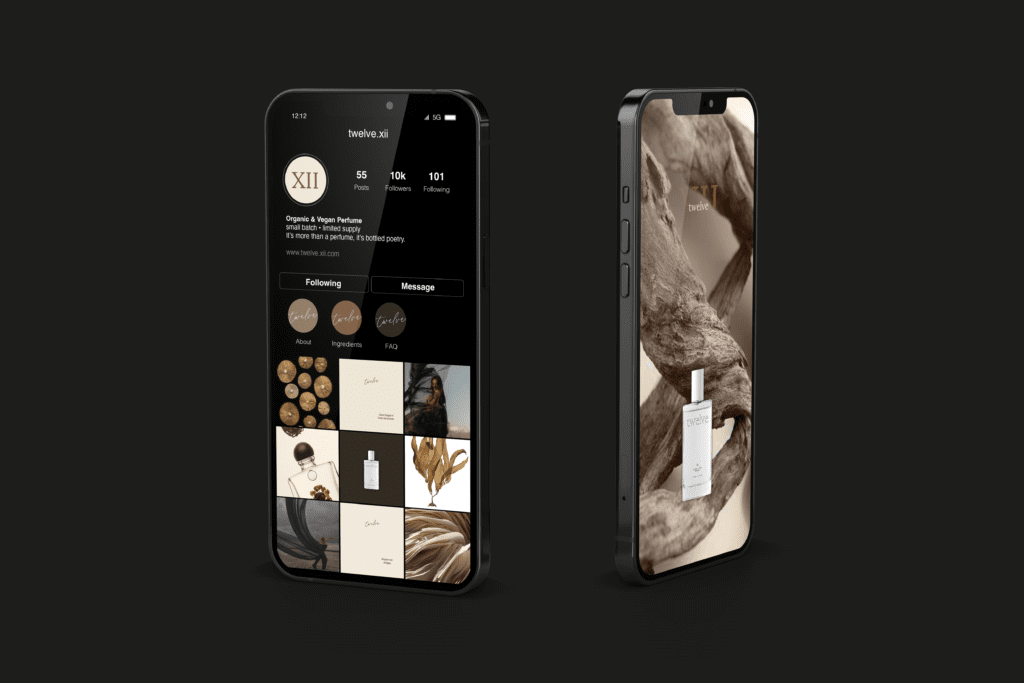How to Build a Freelance Portfolio That Wins Clients (Even If You Have No Experience)
January 20, 2025
by Alex Rezgui

Click! The room plunges into darkness. A spotlight swings, its blinding eye landing on you. Heart thumping, palms sweaty, you take a deep breath and stand up. “This is me. This is what I do. And this is why it matters.”
Intimidating, right? Sharing your portfolio can feel like that. Because putting your work out there is scary. “What if they hate it? What if I haven’t done enough to land the gig?” Every freelancer – rookie or pro – has wrestled with this inner monologue.
Instead of cringing when a potential client says, “Send me your portfolio,” you should smile. Your portfolio is your chance to show who you are. It’s proof of your growth, a reflection of your hard work, and a cornerstone of your freelancing DNA.
In this blog, you’ll learn how to:
- Build a portfolio from scratch
- Improve the one you already have
- And make clients say, “YES!” when they see it
Ready to build a portfolio you’re proud to share? Read on!
How Do You Start A Portfolio When You Have No Clients Yet?
Every freelancer starts somewhere. But when you’re new, “somewhere” can feel like nowhere. You might be wondering how to build a portfolio as a freelancer or where to even begin. The good news? Creating a standout portfolio is easier than you might think.
Whether you’re a designer, writer, marketer, developer, videographer, social media manager, or any other type of freelancer, you can create a portfolio that stands out (even without prior experience).
Here are 5 actionable ways to create a freelance portfolio from scratch:
1. Create Mock Projects For Dream Clients
One of the best ways to showcase your skills and creativity in your freelance portfolio is by creating mock projects. Think about the types of projects you’d love to work on and build your own version. Need inspiration? Look to social media, magazines, online publications, or ads. Aim to highlight not just the final results but your process, too.
Mock projects allow you to dream big. They’re a chance to create something for your ideal clients and demonstrate your full potential. And while it’s tempting to aim for perfection, don’t let that stop you. Just start!
What to include in your mock project:
- Your thought process, approach, and the problem you aim to solve
- Step-by-step explanations with sketches, drafts, and notes
- A breakdown of your solution and why it matters
Example: If you’re a brand designer, create branding for a fictional yoga studio: a logo suite, color palette, typography, and packaging. Showcase your work using mockups of storefronts, business cards, or apparel. Add a brand story to make it feel realistic.
Need mockups? This way for our free mockup collection.
2. Work For Free (And Reap the Rewards)
Unpaid work isn’t glamorous, but it’s an effective way to build your portfolio quickly. Reach out to small businesses, startups, or individuals who could use your help. Offer a short project “on the house” in exchange for experience and a testimonial.
Pro tip: Frame the offer around their needs, not yours. Show them the value they’ll receive, whether it’s a polished video, better social media engagement, or a refreshed brand identity.
Example: If you’re a videographer, create a short promo video for a local restaurant, focusing on the story behind their dishes or customer experience. If possible, track the results (like increased engagement or foot traffic) to strengthen your portfolio.
3. Reach Out To Your Peers
Other freelancers understand the challenges of starting out and are often open to collaborations. Partnering with someone whose skills complement yours allows you to create meaningful work while mimicking the dynamic of working with clients. It’s a win-win: you both get portfolio-worthy results, and the collaboration could even lead to bigger projects down the road.
When approaching peers, come with a clear, manageable idea that benefits both parties. The goal is to showcase your expertise while delivering something useful for your peers.
Example: If you’re a web developer, team up with a photographer to create a standalone portfolio page for their work. Focus on designing an engaging layout that highlights their images and organizes their portfolio in a way that’s easy for potential clients to navigate.
4. Nonprofits Need Your Help (You Need Theirs)
Nonprofits often need professional help but lack the budget to hire it. This is your chance to step in, do meaningful work, and add strong projects to your portfolio. Plus, volunteering opens doors to networking opportunities and looks great on portfolios.
Example: If you’re a social media manager, create a campaign for a nonprofit focused on increasing donations or reach. Include the strategy, execution, and measurable results in your portfolio.
5. Leverage Your Existing Skills
Look at your past projects, even if they weren’t for clients. School assignments, personal blogs, or social media posts can make excellent portfolio pieces with the right presentation. Add context to show how they’re relevant to your target clients.
Example: If you’re a writer, showcase a personal blog post as an example of creating engaging, well-researched content. Add details about the target audience, tone of voice, and overall purpose of the piece.
Starting a freelance portfolio from scratch can feel overwhelming, but it’s also an exciting opportunity to craft something unique. Remember: quality beats quantity. Aim for three strong projects to begin, but even one great project is enough to get started. Over time, your portfolio will grow and evolve, becoming a reflection of your skills, style, and the clients you want to attract.
Start small. Start today. But start.

How to Present Your Freelance Portfolio Like a Pro
So, you’ve got a few projects under your belt. But how in the world do you present your work effectively? While looks matter (let’s be honest, no one’s impressed by a sloppy layout), your portfolio is about more than just aesthetics. It needs to clearly communicate what you’ve done, why you did it, how you approached it, and who it was for.
Instead of obsessing over making it visually perfect, focus on what really matters: showing how your work solved a problem. A well-explained process will always leave a stronger impression than flashy visuals alone.
The Magic Freelance Portfolio Formula
When potential clients look at your portfolio, you can assume that they’ll skim through it. That’s why it’s essential that you grab their attention right away. The formula below is extremely effective because it tells potential clients that you understand what’s important to them: results. By showcasing the value you bring and the problems you solve, you’ll leave a lasting impression.
The magic formula: Problem → Solution → Results → Testimonial
1. Problem
Begin by outlining your past client’s challenge(s) before they hired you. Was their audience unclear about their message? Were they struggling to see results? Did they feel insecure about their website?
2. Solution
This is where you shine. Explain how you addressed the problem. For instance, if your client was converting leads, you might have created targeted content to attract the right audience and improve engagement.
3. Results
Highlight the impact of your work. Use data when possible, like how your email campaign converted 50 leads. If numbers don’t apply, focus on transformation: “With her new visual identity, my client felt confident she could attract a more refined clientele.”
4. Testimonial
Social proof seals the deal. A strong testimonial reassures potential clients: “This person trusted me, so can you.” Avoid vague phrases like “Great job!” and aim for detailed, specific feedback.
Want stronger testimonials every time? Download our free testimonial guide to get the kind of feedback that truly elevates your portfolio.
Using the 4-step formula above will take your portfolio from “it looks cool” to a compilation of case studies that tell a complete story about your work. For inspo, have a look at how the Creative Copywriter displayed it on their website. It combines all the elements above and tells a compelling story that’s easy to read.

What Is The Right Platform For My Freelance Portfolio?
There are many ways to present your portfolio. The most common approach? A PDF. It’s a solid choice because it’s clean, straightforward, and easy to send via email or share on social media. But it’s not the only option. In fact, depending on your goals, there might be better ways to showcase your work and connect with potential clients.
Let’s explore some alternatives:
1. Portfolio Platforms
Platforms like Behance and Dribbble are popular choices for freelancers. They’re free, widely recognized, and ideal for creative professionals looking to build visibility.
Pros:
- Easy to set up and maintain
- Exposure to a community of creatives and potential clients
- Built-in features like comments, likes, and shares can boost visibility
Cons:
- Your portfolio is part of their platform, so not entirely yours
- Stiff competition: your work is listed alongside others
- You don’t fully control how prospects engage with your portfolio
Portfolio platforms are great for networking and getting eyeballs on your work, but they shouldn’t be your only method of showcasing your skills. Think of them as a complement to other options.
2. Social Media As A Portfolio
Platforms like Instagram, LinkedIn, and TikTok have become informal portfolios for many freelancers. Posting your work, behind-the-scenes, and testimonials can grab attention and build rapport with your audience.
Pros:
- Free, accessible, and already familiar to almost everyone
- Great for reaching prospects where they already hang out
- Allows you to show your personality alongside your work
Cons:
- Requires frequent updates to stay relevant
- Post format can feel restrictive to showcase a portfolio
- Algorithms may limit visibility to your target audience
Social media is excellent for engagement, but it’s not the best platform for long-term portfolio storage. Use it strategically to pique interest and lead prospects elsewhere… ideally, to your personal website.
3. Personal Websites
A personal website is, hands down, the gold standard for portfolios. Why? Because it’s yours. You control the design, the narrative, and how prospects experience your work. And it makes you more credible to your potential client’s eyes.
Pros:
- Creative freedom to design a portfolio with your branding
- You can drive traffic directly to your website
- Ability to showcase more than just your portfolio (blog, services, about)
Cons:
- Initial setup can be time consuming
- Costs for hosting, domain, and design can add up
- Requires ongoing updates to keep things fresh
This option also opens the door to advanced marketing strategies like email capture, SEO, and analytics, helping you grow your freelancing business.
If building a website feels overwhelming, consider using professionally designed website templates. They’re cost-effective, easy to customize, and take the guesswork out of creating a stunning portfolio.
Start with our Eclipse Website Template
Deciding on the best portfolio platform depends on your niche, budget, and goals. Portfolio platforms and social media are great for quick exposure and engagement, but a personal website gives you full control and a professional edge. Whether you start small with a PDF or go all in with a custom website, the key is to showcase your work in a way that connects with your ideal clients and drives opportunities your way.

How To Design A Freelance Portfolio For Non-Designers
Portfolios may seem “easy” to design (for designers). But if you’re not one, it can be daunting. But you know what? Your portfolio doesn’t need flashy animations or cutting-edge graphics to make an impact. What matters most is showcasing your work clearly and professionally. Start simple, focus on what you can control, and don’t overthink it.
Here are 3 portfolio design advice for freelancers who aren’t designers:
Advice 1: Prioritize Clean, Simple Layouts
Keep it straightforward. Use a grid layout to organize your work and include plenty of white space to let your projects shine. Avoid overcrowding or using too many fonts and colors. A tool like Canva can help you achieve a professional look without design experience.
Advice 2: Use High-Quality Images and Mockups
How you present your work matters. Invest time in gathering high-quality visuals or use mockup tools to showcase your projects in a realistic, appealing way. A beautiful image does a lot of the heavy lifting and makes your portfolio look more professional with minimal effort.
For free photos you can use for your portfolio: Pexels, Kaboom Pics, Public.work
For high quality mockups visit Moyo Studio.
Advice 3: Create A Consistent Visual Identity
Even if you’re not a designer, you can maintain a consistent look and feel by sticking to a style, a cohesive color palette (3-4 colors), and similar formatting for each project. Consistency builds trust and makes your portfolio easier to navigate.
You don’t need to be a designer to have a great portfolio that gets results. With a clear layout, high-quality visuals, and a consistent style, you can present your work professionally. Remember that your portfolio is a living document, meaning there’s always room to improve its design over time. And if you can, befriend a designer. It might just be the smartest (and most creative) connection you make.
How Do I Create A Standout Freelance Portfolio?
Your portfolio isn’t just a collection of your work. Think of it as a book that dives deeper into your story with every section. Prioritize telling a compelling narrative:
- who you are
- how you solve problems
- and why you’re the obvious choice
Always keep the reader in mind, showcasing the work that best demonstrates the value you bring. Here are 4 secrets to creating a standout freelance portfolio:
Secret 1: Highlight Your Process And Results
Don’t just show what you did, explain how you did it and the results it delivered. Include case studies or quick blurbs about your approach, highlighting the impact of your work. Clients love seeing how you solve problems and what they can expect if they hire you.
Secret 2: Keep It Clean And Organized
Structure matters. A messy or confusing portfolio can turn readers away, no matter how great your work is. Keep sections clearly defined, use headings and subheadings, and guide your audience through your work like a well-told story. A pleasant browsing experience makes you memorable for all the right reasons.
Secret 3: Curate Your Best Work
More doesn’t mean better. Resist the urge to include every project you’ve ever worked on. Instead, focus on a handful of projects that best showcase your expertise, align with your goals, and resonate with your ideal clients. Quality over quantity will win in this case.
Secret 4: Let Your Creativity Shine
Creativity isn’t about flashy features or gimmicks; it’s about showing your unique personality. Maybe it’s in the way you write your project descriptions, the visuals you choose, or even how you format your portfolio. Be creative in ways that feel natural to you. It’s how you’ll stand out.
Last thoughts
Building a freelance portfolio that wins clients is less about flashy designs or countless projects and more about telling a story that connects with your ideal audience.
- start where you are
- use the resources available to you
- focus on showcasing your unique personality
Whether you’re starting from scratch or refining what you already have, remember that portfolios are ever-evolving and always a work in progress. Be patient, be proud, and most importantly, be yourself, because that’s what will truly set you apart.